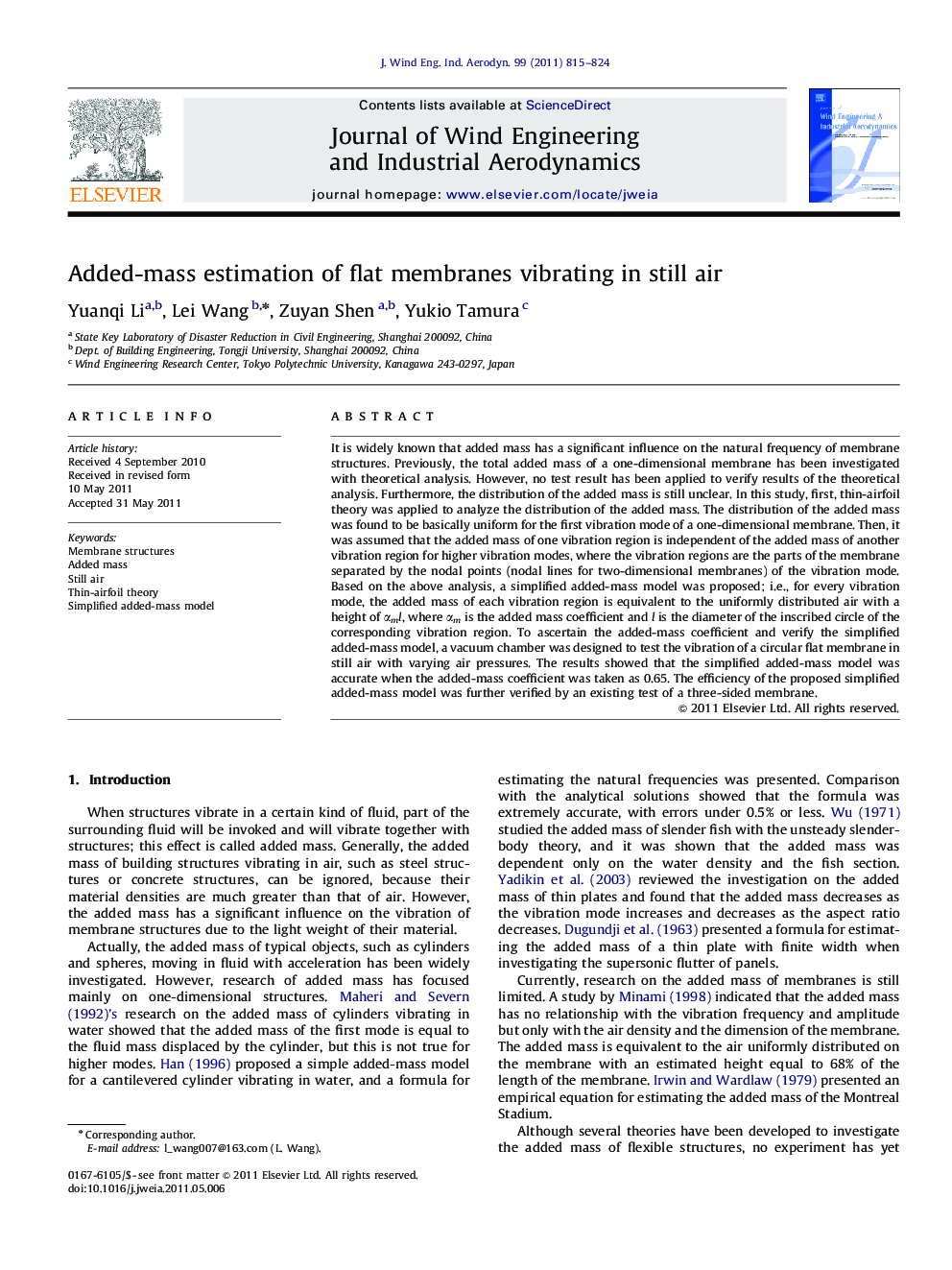| Article ID | Journal | Published Year | Pages | File Type |
|---|---|---|---|---|
| 292587 | Journal of Wind Engineering and Industrial Aerodynamics | 2011 | 10 Pages |
It is widely known that added mass has a significant influence on the natural frequency of membrane structures. Previously, the total added mass of a one-dimensional membrane has been investigated with theoretical analysis. However, no test result has been applied to verify results of the theoretical analysis. Furthermore, the distribution of the added mass is still unclear. In this study, first, thin-airfoil theory was applied to analyze the distribution of the added mass. The distribution of the added mass was found to be basically uniform for the first vibration mode of a one-dimensional membrane. Then, it was assumed that the added mass of one vibration region is independent of the added mass of another vibration region for higher vibration modes, where the vibration regions are the parts of the membrane separated by the nodal points (nodal lines for two-dimensional membranes) of the vibration mode. Based on the above analysis, a simplified added-mass model was proposed; i.e., for every vibration mode, the added mass of each vibration region is equivalent to the uniformly distributed air with a height of αml, where αm is the added mass coefficient and l is the diameter of the inscribed circle of the corresponding vibration region. To ascertain the added-mass coefficient and verify the simplified added-mass model, a vacuum chamber was designed to test the vibration of a circular flat membrane in still air with varying air pressures. The results showed that the simplified added-mass model was accurate when the added-mass coefficient was taken as 0.65. The efficiency of the proposed simplified added-mass model was further verified by an existing test of a three-sided membrane.
► A simplified model for estimating the added mass of flat membrane was proposed. ► Distribution of the added mass in each vibration region is uniform. ► The added mass is dependent on the dimension of the corresponding vibration region. ► Test on a circular membrane was conducted and test results validated the model. ► An existing test of a three-sided membrane further verified the model.
